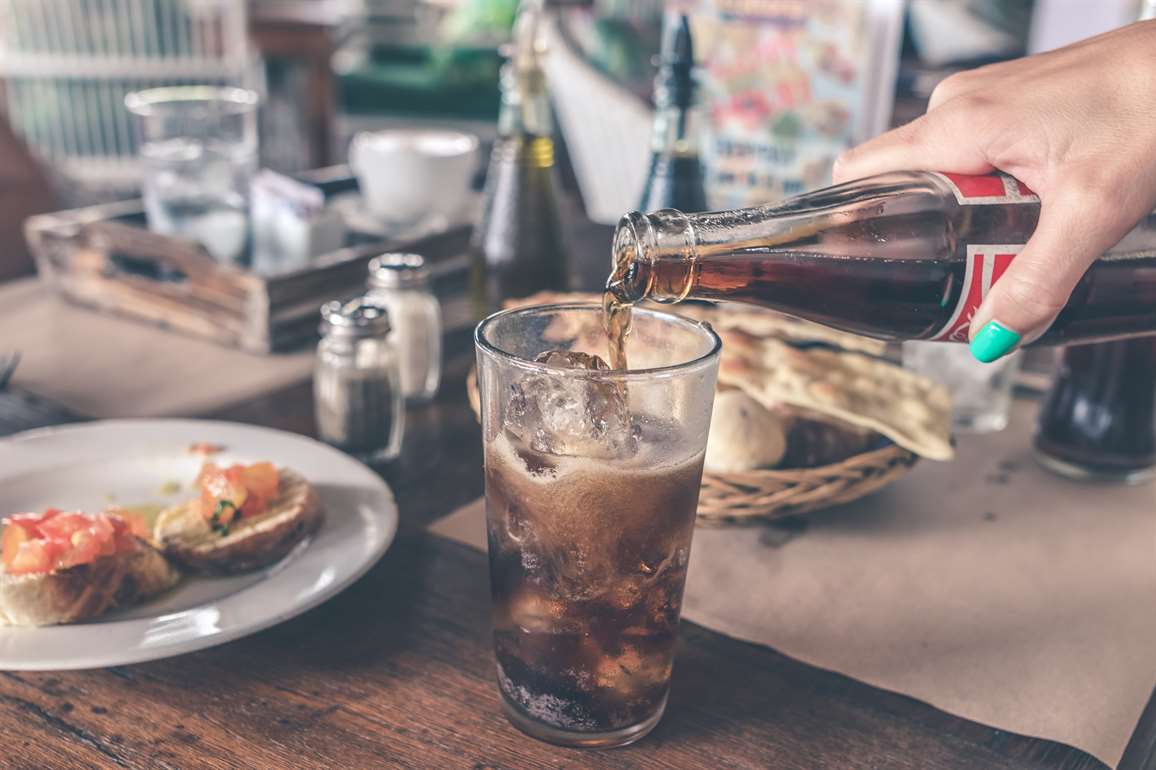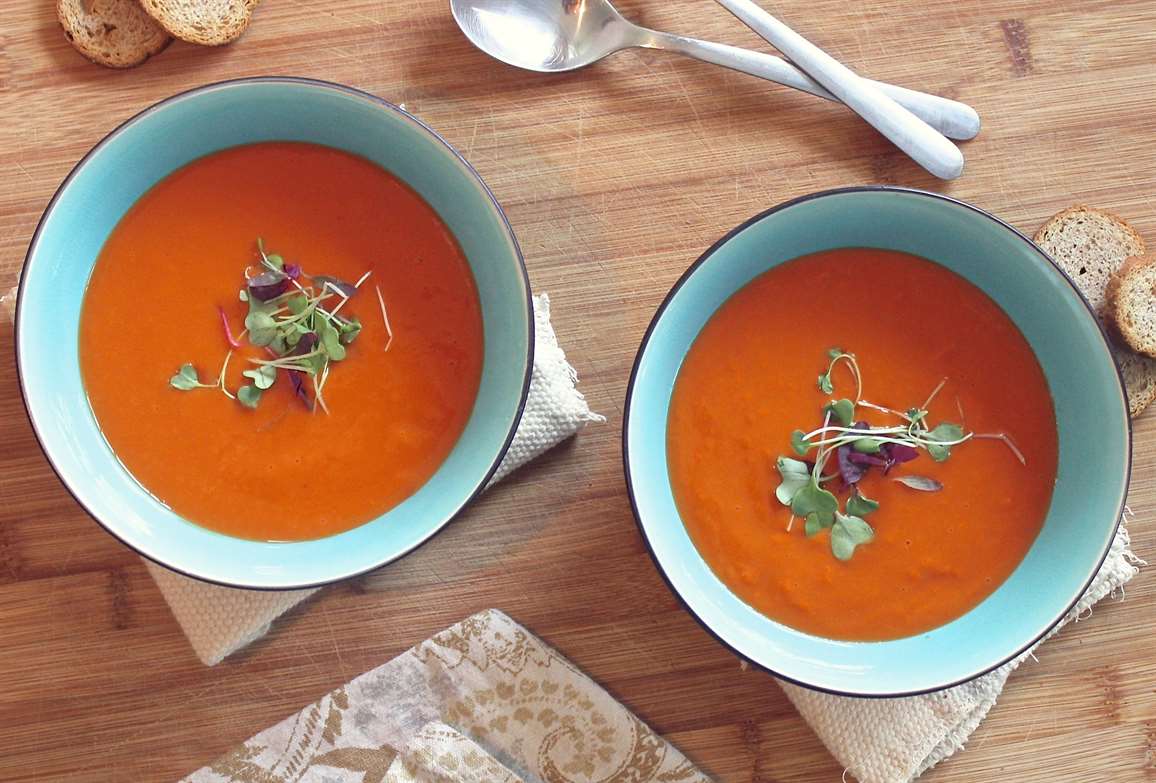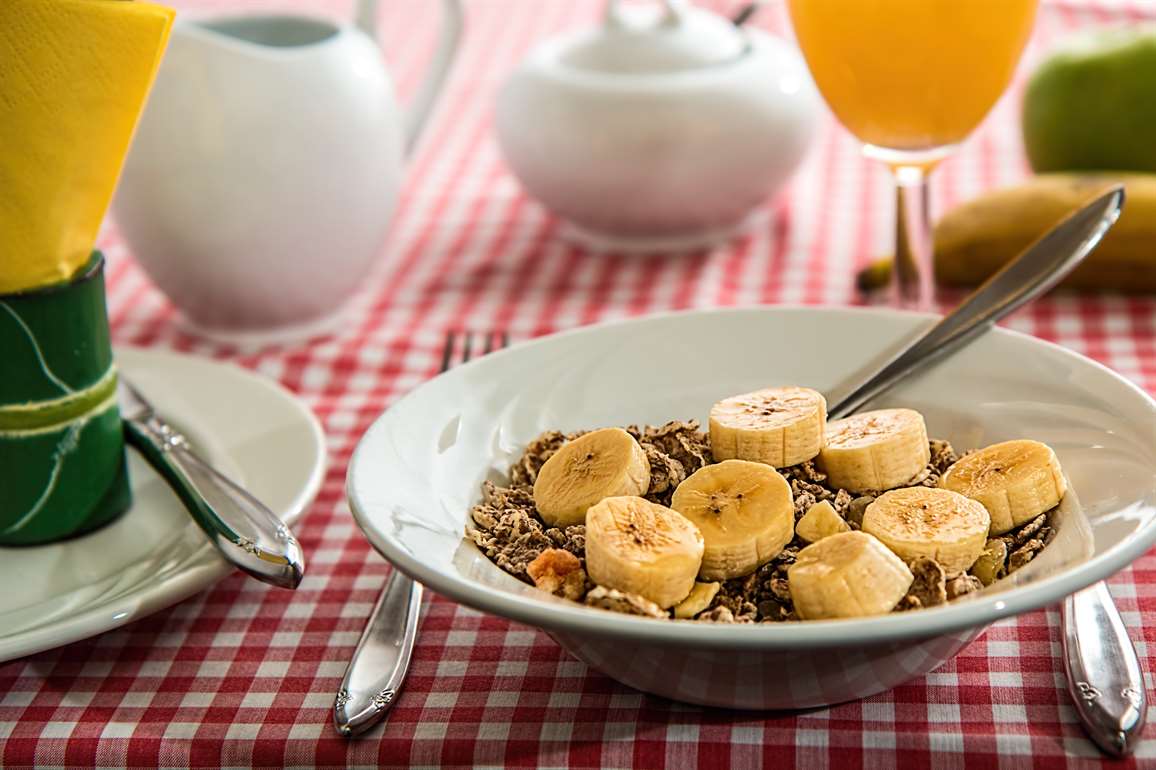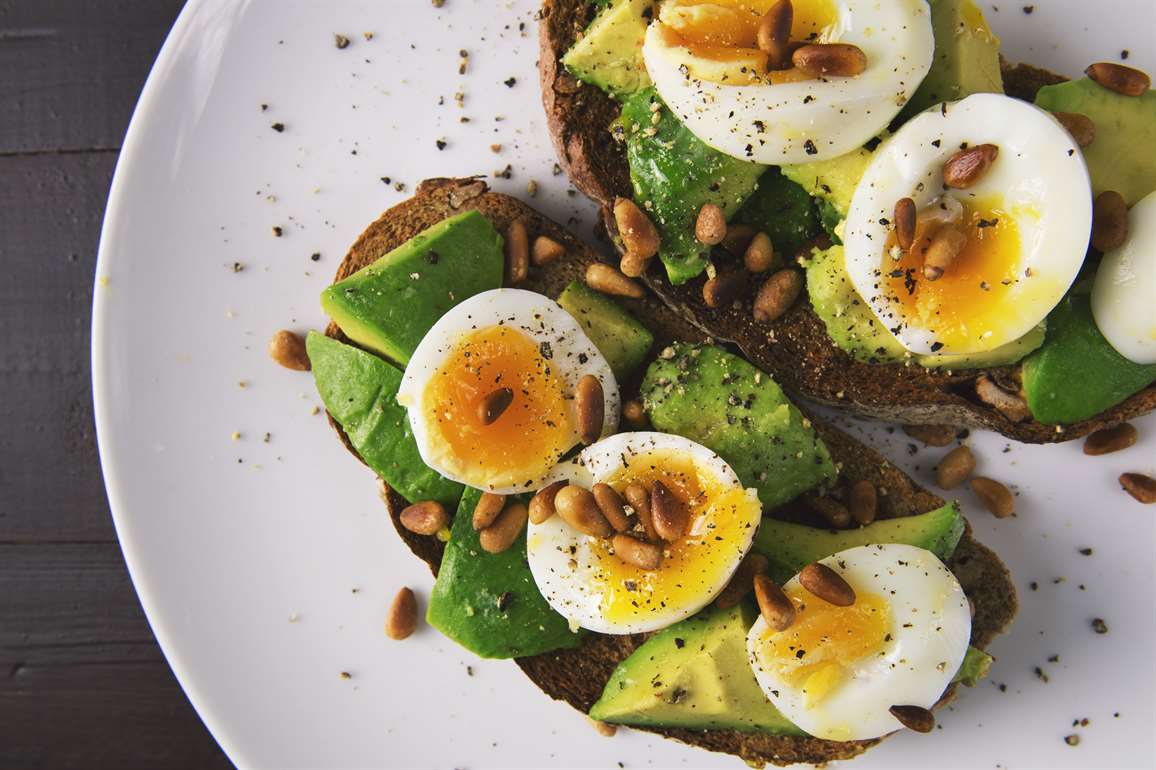27 Essential Eating Tips To Make You Healthier
July 9th, 2018 • 9 min read
Last Updated: August 12th, 2018

Inspiration of the article:
“Don’t compare yourself to others. Compare yourself to the person from yesterday.” —Anonymous
The life we live in is full of many surprises. And in life, there are endless choices that you make every day--some of which can impact your health negatively or vice versa.
Here are 27 essential eating tips to help you develop healthier eating habits:
Slice pineapple on your own
It’s more effort, but buying fresh-cut versions at produce stands may shortchange you a little on nutrients. After six days in the fridge, cubed pineapple loses 10 percent of its vitamin C and 25 percent of its carotenoids (antioxidants) when compared with whole fruit sliced the same day it’s eaten, according to research.
Related: 15 Foods To Diminish Belly Fat
Ditch the sugar carbonated drinks

In their place, enjoy carbonated water—on its own or with a slice or squeeze of lemon or lime, with a splash of real fruit juice.
Let chopped garlic sit
When the clove is minced or crushed, an enzyme called allinase is released, triggering the formation of disease-fighting compounds. Give it ten to 15 minutes. Cooking the garlic bits too soon can inactivate the enzyme.
Start meals with soup first

Soup is a successful dieter’s secret weapon! A 2014 study found that regular soup eaters have smaller waists and weigh less than people who don’t eat soup. Look for those with low-fat milk or low-sodium broth and add your own veggies for slimming fiber.
Read: 4 Ways to Manipulate Your Hormones To Help You Lose Weight
End with bread afterwards
People with type 2 diabetes had 30 percent higher peak blood sugar when they ate bread before a meal compared with when they ate it after a meal, according to a small study published in Diabetes Care. Related research has shown that a rapid increase in blood sugar causes hormonal and metabolic changes that promote excessive eating in obese individuals. Eating bread after a meal slows the conversion of refined carbohydrates into sugar and may keep food consumption in check, especially in people with weight problems, insulin resistance, or diabetes.
Incorporate breakfast with fiber

One of the best healthy eating tips is to start ramping up your fiber intake is breakfast. People who eat high-fiber cereals are 80 percent more likely to achieve their daily fiber target than those who don’t. Add fresh or dried fruits to breakfast cereal and replace white bread with whole-grain varieties.
Related: 7 Amazing Health Benefits of Carrots
Also include peanut butter for breakfast
Forget butter, jelly, or cream cheese. Peanut butter raises the protein quality and quantity when added to bread, producing a highly nutritious and satiating food. Look for low-salt and low-sugar varieties.
Childhood superheroes

Want your kids to start picking baby carrots over cookies? Ask them, “What would Thor eat?” This simple question encourages children to make healthier fast-food choices, according to researchers from Cornell University. When researchers posed the WWBE question, offering children the choice between apple slices or chips, 45 percent chose the apples. Substitute your child’s favorite superhero if Thor doesn’t do the trick.
Incorporate smoothies
When buying a ready-made smoothie, make sure it contains whole fruit, not just juice. Fruit juice has none of the important fiber that you get from fresh fruits. And if you sip juicy smoothies slowly over time, the acidic juice can damage your tooth enamel.
Note: If you want to try Health Coach Drew's revolutionary new life-transformation system--The Smoothie Diet, that not only guarantees to help you lose weight, it also promises to eliminate more body fat.
Included are not only smoothie recipes (over 36) specifically catered to assist the burning of body fat, but also the full 21-day weight loss and health improvement program that he regularly uses with his private coaching clients, shopping lists for each week to make it super simple, and smoothie making tips & prep guide. Go there now OR CLICK HERE NOW(Note: Full refund available within 60 days if this has not worked out for you)
Switch out granola
Granola is often fiber-rich and low on the glycemic index, so it keeps you feeling full for longer. It may also contain omega-3 and omega-6 fatty acids, B vitamins, iron, and folate from the rolled oats, fruits, nuts, and seeds. On the downside, however, many granolas are packed with sugar and high in saturated fat. Instead, sprinkle nuts, seeds, or dried fruit over your oatmeal and you’ll get the same taste and nutrition as granola while slashing your sugar and fat intake.
Meals with wine

Evidence from France and other wine-producing countries clearly shows that drinking alcohol with meals is best for your health.
Read: Amazing Weight Loss & Health Benefits of Red Tea
Don't eat plain celery
You might think you’re being virtuous, but noshing on plain sticks (without a yummy dip like hummus) will leave you unsatisfied and could result in bingeing later on. A satisfying snack produces feelings of satiety and passes slowly through the digestive system. Consider combinations of protein from foods like cheese, eggs, hummus, or peanut butter; fat from nuts or avocados; and complex carbs from whole-grain crackers.
Clear yourself of wrapped sandwiches
Substituting a thin-looking wrap for a traditional bread sandwich might seem like a skinnier option, but it’s not. The tortilla alone can sneak in as many as 300 to 400 calories—and that’s not counting the filling! Opt for a sammie made with whole-grain bread (the grainier the better) spread with a little low-fat mayo, then filled with a hard-boiled egg, roast turkey, or chicken, plus a pile of tomatoes, roasted peppers, and dark-green lettuce.
Pick darker bottles of olive oil
You can add olive oil to your list of healthy eating tips! This delicious oil is especially high in the key MUFA component oleic acid, which appears to lower “bad” LDL cholesterol levels and combat inflammation. It may also help reduce high blood pressure. Light and heat can make oils go rancid, so dark bottles are best. And buy “extra virgin.” It has the freshest flavor and highest levels of phytonutrients.
Be guilt-free when eating eggs

Eggs are such an egg-cellent source of nutrition that they easily qualify as a superfood. A single egg contains 6 grams of high-quality protein and 12 different vitamins and minerals, including the antioxidant selenium, vitamins B2 and B12, and the carotenoids lutein and zeaxanthin, which may reduce the risk of macular degeneration. There is no clear link between eating eggs and the risk of heart disease, as once thought. Most of us no longer need to limit egg consumption, unless advised to do so, as health experts concede that concerns about their effect on cholesterol levels were largely unfounded.
And drink orange juice with your eggs
The body’s absorption of iron in the eggs is enhanced when you eat them with vitamin C. Similarly, it’s a good idea to squeeze lemon over spinach. Those dark greens are a good source of iron, but for the body to absorb plant forms of the mineral more easily, spinach needs to be paired with vitamin C (hence the shot of lemon).
Go food shopping with a friend
This way you can get the most of buy-one-get-one-free or similar bargain foods you might waste or eat too much of.
Eat an apple or banana before you leave

At the start of a shopping trip, Cornell researchers randomly gave 120 people a sample of an apple, a cookie, or nothing. Those who received the apple bought 28 percent more fruits and vegetables than those who got a cookie and 25 percent more than those who got no snack. Read these 8 Health Benefits Of Apples.
Eat grass-fed meat
What an animal eats determines the kind of fat prevalent in its meat. A 2009 study showed that, compared to cattle bred indoors, pasture-raised, grass-fed beef had lower total saturated fat, more omega-3 fatty acids, a healthier ratio of omega-6 to omega-3 acids, and higher levels of some vitamins. The Environmental Working Group, a consumer watchdog organization, points out that these benefits are in addition to the fact that eating organic or grass-fed beef reduces your exposure to antibiotics, hormones, and pesticides that can accumulate in animal fat.
Cut back on processed meats
One study from the Harvard School of Public Health found that people who regularly ate processed meats had a 42 percent higher risk of heart disease and a 19 percent higher risk of type 2 diabetes. So what should you have in your lunchtime sandwich? If there’s leftover chicken from last night’s dinner, carve it up and place it between two slices of high-fiber, whole-grain bread, with sliced tomato and lettuce. Buy freshly carved meat from the deli counter and choose sliced packaged meats—not those described as “re-formed.”
Related: 10 Simple Weight Loss Tips Guaranteed to Work
Choose “live” yogurt
Yogurt is a top source of calcium, protein, and potassium, but its status as a superfood comes down to the probiotic bacteria, which are present in “live” yogurt. These bacteria help maintain the ideal balance of bacteria in the gut and we’re only just beginning to grasp how important this is for health and longevity. Yogurt with live, active cultures is particularly helpful for people with gut disorders, such as constipation, diarrhea, and irritable bowel syndrome.
And mix it well - That watery stuff sitting on top is whey, and it’s filled with protein, bone-strengthening calcium, vitamin D, and gut-friendly probiotics. When you pour it in the sink, your body misses out.
Get prepared grocery store meals for healthier suppers
Supermarket prepared meals can help when things get hectic. It’s okay to use them as a base, but you’ll want to incorporate some healthy eating tips like reducing their total salt and fat or adding nutrients like extra steamed broccoli to broccoli and cheese soup, more kidney beans and chopped tomatoes to a ready-made chili, or extra veggie toppings to a pizza, like sun-dried tomatoes, mushrooms, or artichoke hearts, all served with a large, colorful side salad.
Get creative with leftovers
A traditional roast dinner can generate many further possibilities. At its simplest, leftover roast meat can be used for weekday lunches in sandwiches or salads, reducing the amount of salty processed meat you eat. Or a small amount of chicken can go a long way in a risotto. Once the carcass has been picked clean, it can be simmered with vegetables and aromatics to make stock for soup or to use as a base in another casserole. If you have leftover lamb, you can make a tasty curry or use leftover beef, plus a can of tomatoes and red kidney beans to make a quick chili con carne. Or make meat patties: Blitz the meat in a food processor, dip in egg and breadcrumbs, then brush with a little olive oil and fry on a griddle.
Microwave the potatoes
Microwaving or baking retains the most nutrients. If you peel and boil the spuds, you lose all the fiber in the skin and about ttwo-thirdsof the vitamin C.
Read: Here are several important reasons why you need to eat throughout the day if you want to lose weight
Decide on your fast food item before you arrive there
Commit to ordering that salad in advance of arriving at the drive-thru. “Our research suggests that under stress, the rewarding aspects of an outcome as in eating a juicy burger get more attention than the potential negative consequences as in overloading on salt, fat, and calories,” says Mara Mather, PhD, a professor at the University of Southern California Davis, who researches stress and the decision making process. “Even if you do make the apparently healthy choice, you must beware: If you’re not careful, add-ons and dressings can make salads nearly as fatty and salty as burgers.
Put more focus on the healthy choices
Negative messages about unhealthy food may make you crave it more. In an Arizona State University study, researchers gave dieters either positive or negative messages about sugary snacks. Participants then watched a video while eating cookies. Those who received the negative messages ate 39 percent more cookies than the positive-message group. If you’re trying to diet, think about the pros of healthy food rather than the cons of junk food.
(For the men) be careful when eating with company

Men may overindulge when they eat with ladies, partly to impress the fairer sex. Cornell University researchers observed adults at an all-you-can-eat Italian buffet for two weeks, recording how much pizza and salad each ate. Men with at least one woman ate 93 percent more salad than men with other men. (The amount that women ate didn’t differ based on their companions’ gender).
Enjoyed the read?
Change Your Life With Us
healthfulinspired.comFind Inspiration
WEIGHT LOSS STORIESStay Physically Confident
WORKOUTS CURATED FOR WEIGHT LOSSNever Fall Behind
WEIGHT LOSS ARTICLES, CONTENT AND TIPSSubscribe
Become a subscriber today to start receiving newsletters of the latest, best trending health content delivered straight to your inbox. (You only need to enter your email)
Amazon Associates Disclosure
We are a participant in the Amazon Services LLC Associates Program, an affiliate advertising program designed to provide a means for us to earn fees by advertising linking to Amazon.com and affiliated sites.